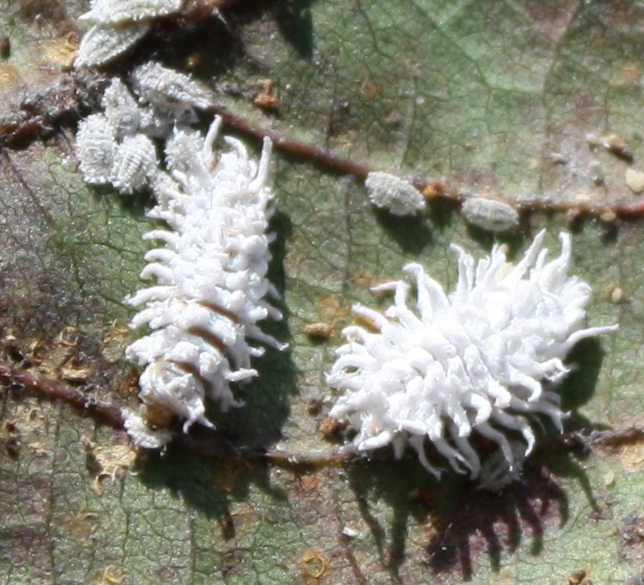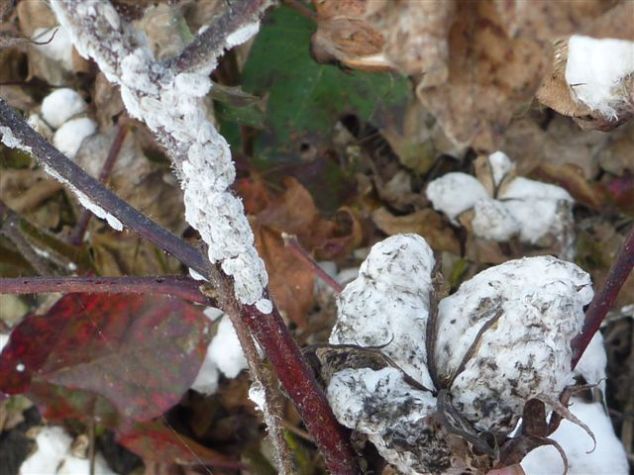This is the same species of mealybug that affected cotton crops in Emerald and the Burdekin in 2010 and more recently in the South Burnett.
When infested at the early development stage, plants often exhibit distorted terminal growth and crinkled and bunchy leaves. In severe cases plant death will occur. Late season cotton crop infestations can cause squares and small bolls to drop, as well as fewer, smaller and deformed bolls and premature crop senescence. Mealybug also produce honeydew which can contaminate cotton lint and promote the growth of sooty mould fungi that reduces photosynthesis.
Methods of spread
How the mealybug outbreak on the Darling Downs started is not known but it is important to avoid spreading this pest onto other properties.
Localised movement of mealybug occur when juveniles (crawlers) move from infected fields to adjacent healthy crops. The waxy coating on the mealybug crawlers also facilitates passive transport of the insect by sticking onto equipment, other insects (e.g. bees), birds, animals or people. Small crawlers are also readily transported by wind and rain or in water in irrigation channels. Long-distance movement through the transport of infested plants is also possible.
There are no insecticides registered for the control of mealybug in cotton. However there are a number of management options that can reduce infestations and the overall impact of this pest.
While you can still find mealybug in Emerald, infestations are not nearly as severe as in 2010.
A good farm hygiene program, which includes weed management has been implemented on most properties and has resulted in a decrease of this pest.
Natural enemies have also proven to be important in reducing mealybug numbers. In some instances, these beneficial insects have been so abundant and effective that they have decimated local mealybug populations. Ladybirds, lacewings, spiders and cockroaches are some of the important predators of mealybug. A parasitoid of mealybug, Aenasius bambawalei, first found in a cotton field in Byee in 2012 is also providing control of this pest.
Cryptolaemus lady birds are important predators of mealybug
Flaring mealybug populations
The use of insecticides targeting other pests can have a major impact on mealybug numbers in the crop.
This case study clearly illustrates that insecticides, especially broad spectrum chemistries, can have a detrimental effect on those beneficial insects that keep mealybug in check.
Sooty mould is a result of honeydew excreted by mealybug
Observations made this season in Emerald suggest that continuous high temperatures may promote breeding of mealybug and hence contribute to outbreaks.


